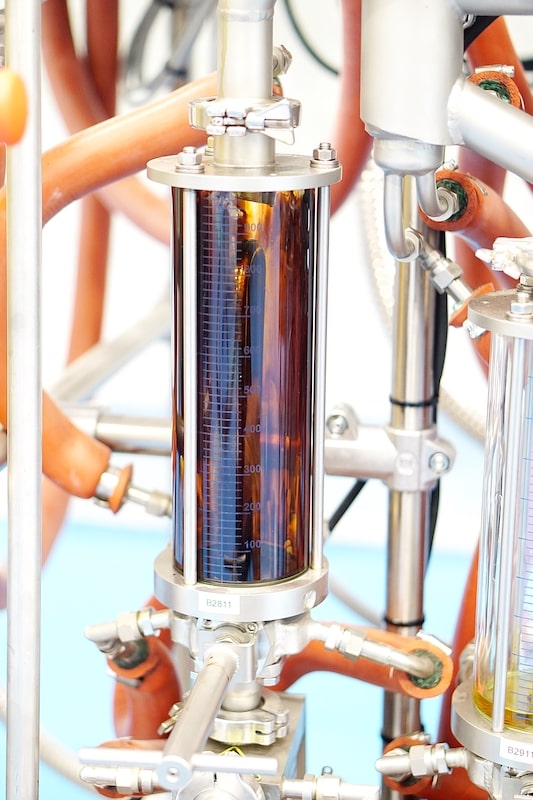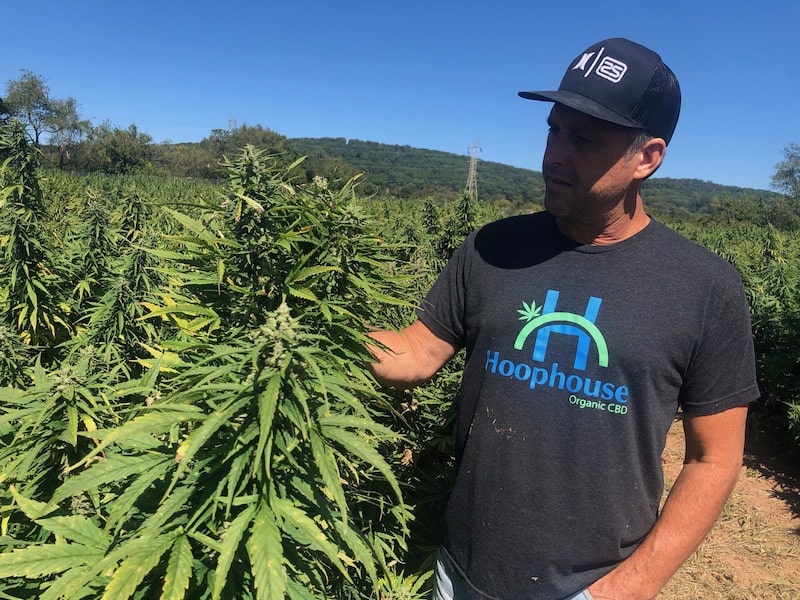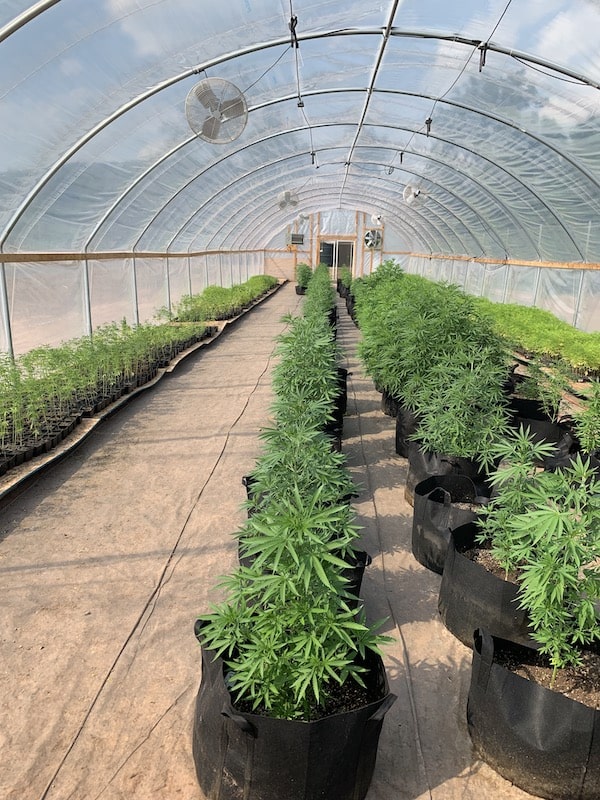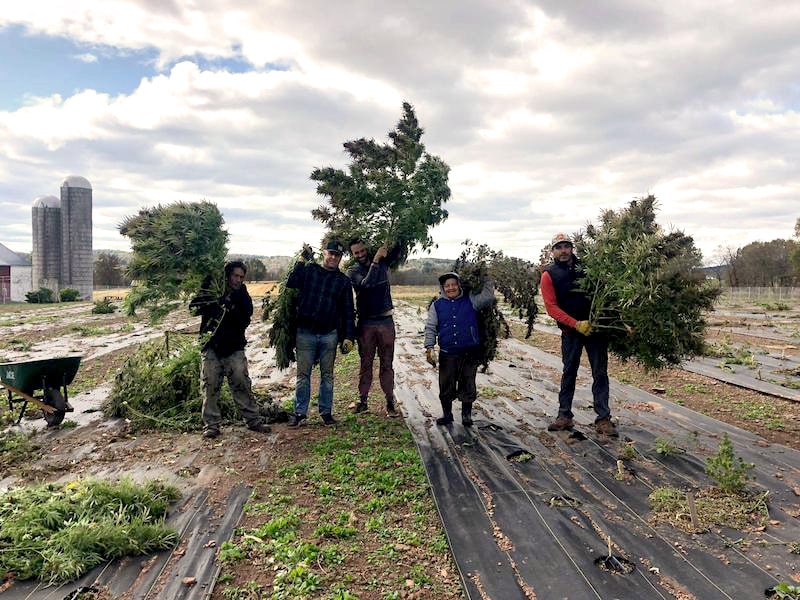Due to the relative youth of the modern U.S. hemp industry, best practices and broadly agreed-upon standards are still coalescing. One area where lack of alignment in expectations can cause difficulty is the delivery of CBD or other cannabinoid-rich hemp biomass from a farmer to a processor. If biomass does not meet certain specifications, was prepared or stored incorrectly, or does not have the required compliance credentials, among other issues, the result could be a slower, less efficient extraction process, or the processor may reject the biomass altogether.
Hemp Benchmarks spoke with several individuals involved in the extraction and processing side of the industry to find out what advice they have for hemp cultivators. They also discussed how hemp farmers can avoid some of the most common and costly mistakes that they have seen leading up to and through the harvest, as well as in post-harvest handling of plant material.

A running theme throughout the discussions was that farmers should talk to processors pre-harvest and develop a working relationship. Matt Baxter, one of the co-founders of Context Hemplab, a farm and processing facility in Bucks County, Pennsylvania, said his company is currently working with farmers who collectively are growing over 500 acres of hemp this year. Baxter described coordinating closely with them on issues such as harvesting, drying, storage, “and a slew of other hurdles that they faced last year, that we’re helping them avoid.”
Make Sure Crops are Compliant and Biomass is Tested
“I cannot count the amount of farmers I’ve known who did not do the [state] required testing in the required time window,” said Steve Fuhr, an Oregon-based hemp processor and multi-state consultant in the hemp sector. Because of those basic lapses, he told Hemp Benchmarks, farmers can discover to their dismay that “legally and technically, their product is unsellable.”
Fuhr said hemp biomass needs to be tested by a third party ahead of processing for THC content, microbials, and contaminants, such as pesticides and heavy metals. Requirements vary state-to-state and some processors have their own in-house standards. Additionally, certain events or situations can prompt the need for testing, such as the historic wildfires that recently impacted southern Oregon’s hemp crop. Farmers in the vicinity of the wildfires may want to perform tests for heavy metals and other contaminants that might have gotten onto plants via the smoke from the blazes.
If harvested hemp is to be transported it also needs to have a certificate of analysis (COA). “Less than half of [cultivators] do this,” Fuhr noted. “They do a potency test, which is not an official test. Farmers should be potency testing … while the crop is in the field, to know whether it’s getting hot or not.” In order to avoid hot hemp issues, Fuhr recommends farmers do four to six potency tests per season for every ten acres being grown. “Do a $50 potency test to see if it’s getting hot or not,” he suggested. “And if it’s getting hot, it’s time to harvest it.”
“Hot” hemp – that is, hemp that contains more than the legal limit of 0.3% THC – is one of the biggest issues in the industry. Processors say some hemp farmers are not paying close enough attention to the THC threshold. “We’ve been turning down more material,” Baxter told Hemp Benchmarks. Baxter and Chris Dolan, the co-founders of Context Hemplab, also recommend weekly, in-field testing of hemp and an earlier harvest if it is approaching the 0.3% THC limit.
Fuhr noted that in the past there was some regulatory flexibility regarding hemp potency, and that biomass and other plant material sometimes “slipp[ed] through the cracks” of enforcement by state regulators. Now, however, “those cracks have closed,” he said.

Harvest and Drying Pointers
Once a farmer has ensured that their crop is compliant and properly credentialed according to the requirements of their state, certain considerations in the process of harvesting and drying hemp should be taken into account to help ensure that the resulting product is marketable.
Fuhr recommends hemp cultivators use machine harvesters designed specifically for hemp and not for other crops, as the latter can mix into the hemp surrounding materials like hay. In those situations, he said, “you’re going to pull an 8% or 10% CBD biomass down to 5%,” which will reduce the value of the crop.
He also advised against drying hemp in the field before processing, since dirt, sand, and other debris sticks to hemp trichomes and can ultimately damage processing equipment. “Some people … look to in-the-field drying as the cheap, easy way around having to spend $3, $4, $5 a pound to put it through a drying machine,” he said. “And I can tell you of the two [or] three-dozen farmers I knew who tried that last year, they all basically regretted it.”
Having clean hemp biomass is essential, especially if it has been dried and stored for a while before processing. “A good smell, no pests,” Craig Henderson, CEO at Boulder, Colorado-based Extract Labs, told Hemp Benchmarks were some of the main characteristics his operation was looking for in biomass. “We’ve received materials before with mites; even with nails and floor sweepings.”
Biomass Consistency and Size
The processors we consulted stressed that cultivators need to speak with them pre-harvest, regarding issues such as moisture content and product size. “The best thing is for the farmer to get the material down and dry,” Context Hemplab’s Baxter emphasized, “and before they do anything else with it… get in contact with a processor, and work with that processor as much as they can and as closely as they can to decide what shape their biomass should be stored in, and what shape their biomass should be processed in, before it’s extracted.”
“Some processors are going to want shorter, finer material; some are going to want more coarse material,” John Strohfus, founder and CEO of Minnesota Hemp Farms, told Hemp Benchmarks. “And [farmers] really need to work with their processor if they’re planning to sell on that wholesale channel.”
Not consulting with processors can result in problems and inefficiency in the extraction process. “We’re receiving tens of thousands of pounds of material that’s been overly-milled because someone recommended that they mill it to a certain size,” noted Baxter. Overly-milled hemp can cause problems for a processor’s equipment, he added, which can add to the farmer’s overall costs.
What processors do not want from a farmer, according to Fuhr, is hemp that has been ground into powder. “You get a lower yield and more chlorophyll,” he said, “because [the grinding] shatters cell walls in the plant, [which leads to] lower yield and potency, which requires more post-processing.”
There were also warnings about hemp biomass destined for extraction containing excessive amounts of seeds. Low seed content is important, said Baxter, “because the seed weight throws off your ratios and throws off your COA.”
Fuhr said processors look first at product consistency, then they look for seeds. “[Seeds] dramatically affect yields and have the habit of lowering the yield on your extraction,” he added. “They create channels in your biomass and … block the solvent from reaching all the biomass.” Another issue with seeds, Fuhr noted, is they can affect the quality of the hemp oil extract by introducing “more fats, more chlorophyll, more lipids into your crude, so they require greater post-processing to get the oil ready for distillation and crystallization.”

Stay Within Your Limits
Dolan of Context Hemplab suggested hemp cultivators grow only as much as they are capable of handling. “We grew five acres this year with very low labor costs,” he told Hemp Benchmarks. “Some farmers don’t have the manpower [for big hemp grows]; we’ve seen some farms die on the vine because of that.”
“Instead of trying to grow 5,000 acres, grow 30,” echoed Henderson at Extract Labs. Processors may also have a better idea of what hemp derivatives are selling, which can help farmers get a better return on their efforts. “Look at new cannabinoids, maybe a CBG strain if you grow something new. Something with a high terpene profile.”
“Some of these pitfalls … [the farmers] just didn’t know were there,” Baxter added. “If they had had a trusted processor with them last year, they would have avoided a lot of the pain and agony that they had to go through.”




